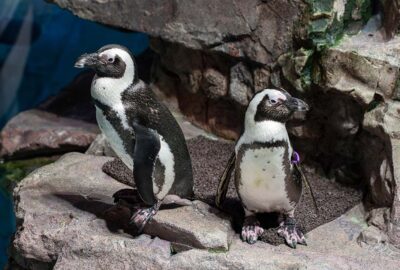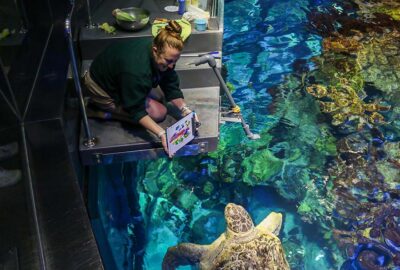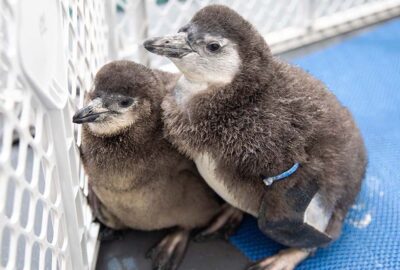Fun for All Ages: How Enrichment Looks Different for Older and Younger Penguins
Trainers work closely with each of the penguins to provide enrichment that encourages natural behaviors—and suits their often-unique needs.
By New England Aquarium on Wednesday, October 29, 2025

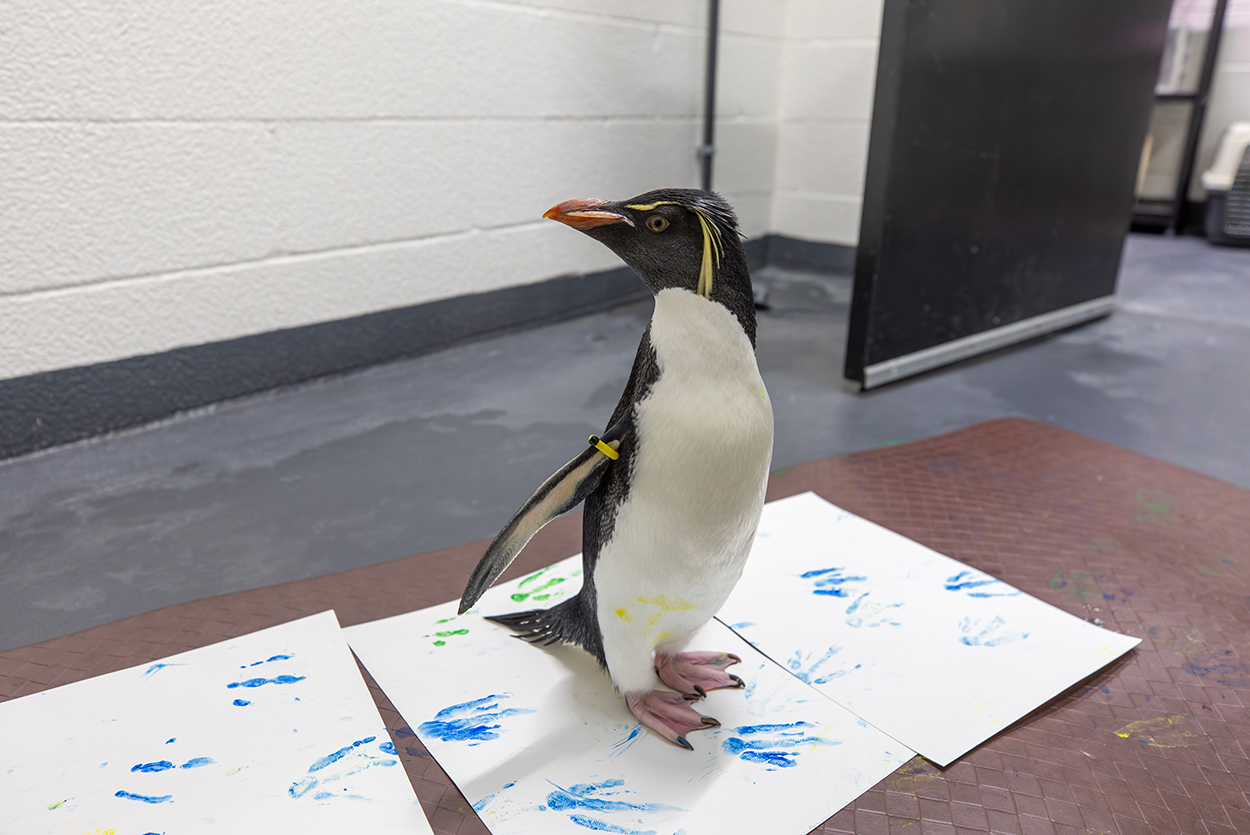
With around 50 birds in both the African penguin and southern rockhopper penguin colonies here at the Aquarium, trainers work hard to care for each and every individual. That means working closely to provide enrichment activities that encourage our penguins to engage in natural behaviors, explore, and even play—but are also the “right” activities for each bird.
“Our colony is really diverse,” said senior trainer Mia Luzietti, who is enrichment coordinator for the team. “Some of our birds are one year old, and some are in their 30s. So, we work to tailor their enrichment to their individual needs to help them succeed.”
Read on to learn about some of the different enrichment activities that our oldest and youngest penguins engage in, and how it keeps them active, curious, and thriving.
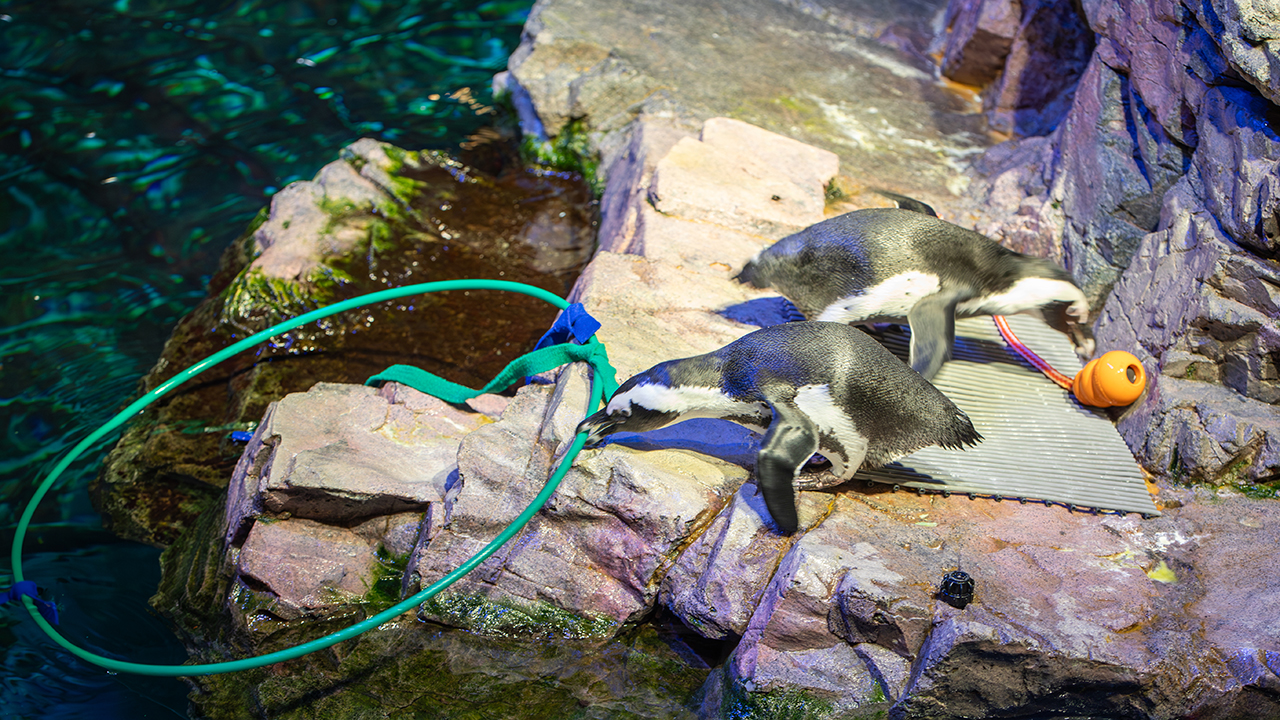
Enrichment for younger birds
Painting is a favorite activity for Bray, a two-year-old African penguin. To help create her masterpieces, trainers place paint on Bray’s feet. Then, she walks across the canvas which is laid out on the floor—getting a lot of praise and reinforcement for each pass.
But it’s not just for fun. Painting also helps birds like Bray acclimate to having their feet touched, preparing them to receive necessary health care—such as foot checks and ointments—in the future.
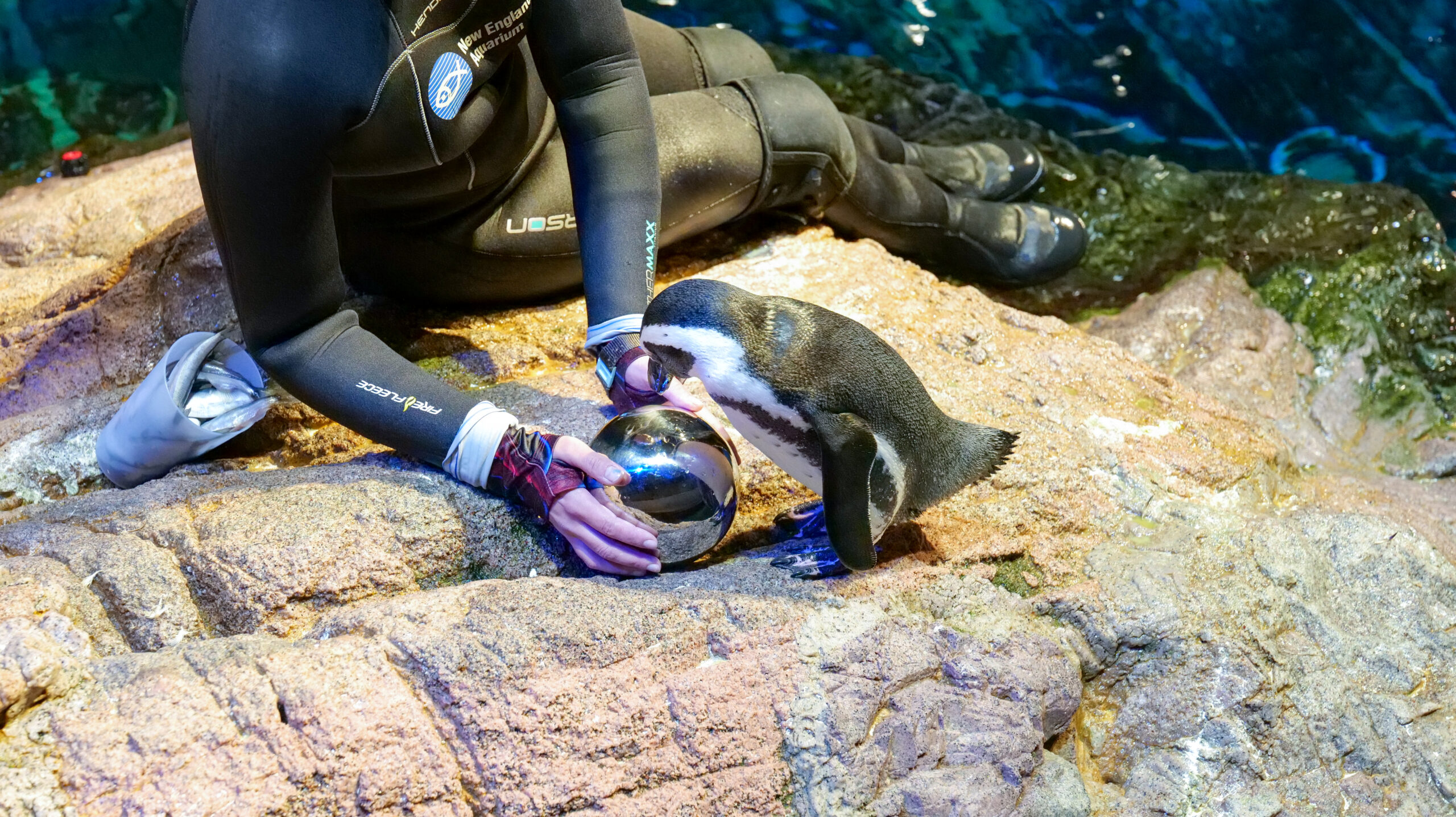
Mirrors provide enrichment for curious birds, who check out their reflections and enjoy having something shiny, novel, and reflective to explore in their environment.
“We have a variety of behaviors we’re looking to encourage, whether it’s exercise, exploration, manipulation, or foraging,” Mia said.
To achieve that, Mia and her team “get creative,” she said, testing out new objects and materials that offer new sensory, visual, and auditory experiences—or even just have fun. “Play is a natural behavior for these species,” Mia added. “So, we use the enrichment to try and mix things up.”
The rockhopper penguins will take ice cubes offered by their trainers and carry them around, offer them to mates, play, or use them in nesting. Other birds are also eager to search for food that’s scattered throughout their habitat.
Enrichment can also be a social activity for the penguins, too—such as when as when Brenton plays tug-of-war with a trainer over car wash strips, which make an excellent plaything for our penguins.
“We’re always working to get new objects and materials approved to use by our Animal Health department,” Mia said. “If we’re not being creative and we’re getting bored—well, we can probably assume it’s not hitting for the birds, either!”
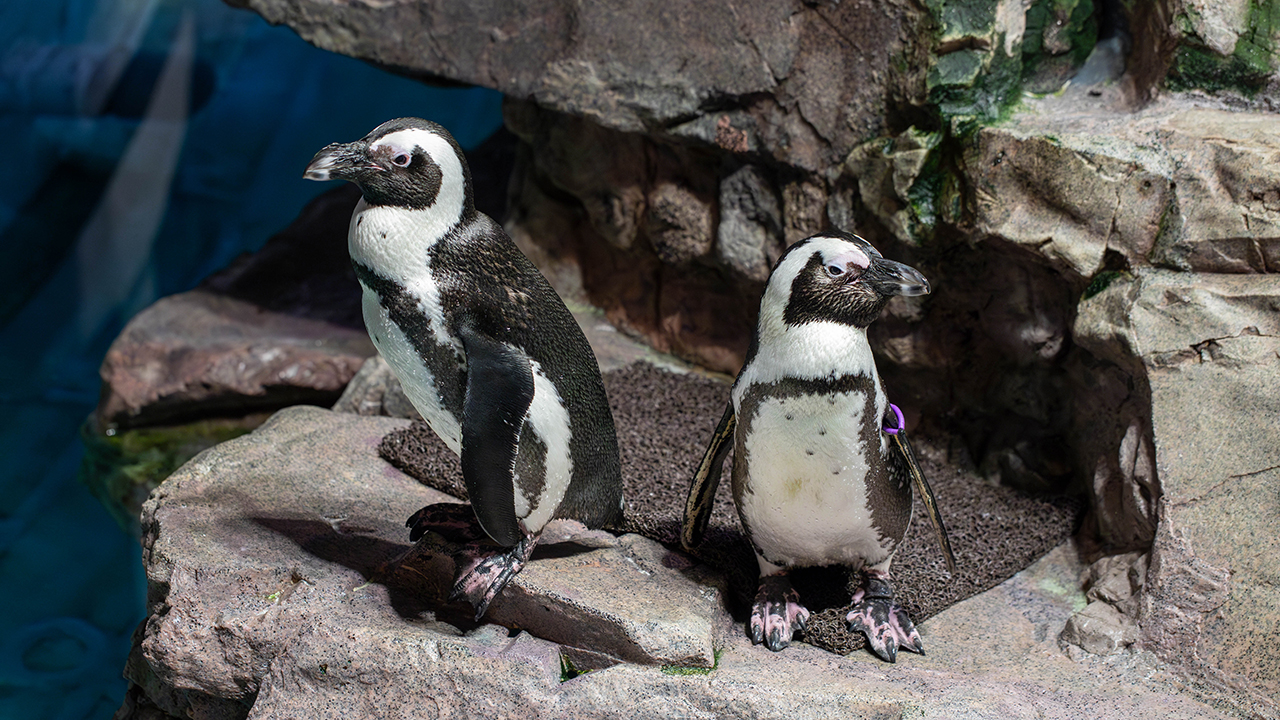
Enrichment for older birds
For older birds like Lambert, a 33-year-old African penguin who has limited vision, enrichment looks a little more low-key. He and his fellow geriatric penguins on “retirement island” enjoy a quieter pace of life—and our trainers offer them enrichment to match.
For these animals, changing up their physical space provides a lot of enrichment and can help them better navigate their island as aging birds. Textured mats provide traction and interest in the birds’ habitat. Ramps and cushioned surfaces help Lambert navigate from his perch on the top of the island to the water below. Plus, a new addition, a floating island constructed from PVC pipe, is a protype of potential future alterations to keep them engaged in their space.
Lambert is also trained to participate voluntarily in his health care, including receiving daily eye drops, and gets lots of one-on-one attention from his trainers. After those sessions, they say they see him more energized and interested in swimming with his mate, Dyer.
“Training them to receive different health care, like eye drops, is also enrichment!” Mia said. “Because of their health needs, the geriatric birds are some of the ones that have the most frequent new experiences.”
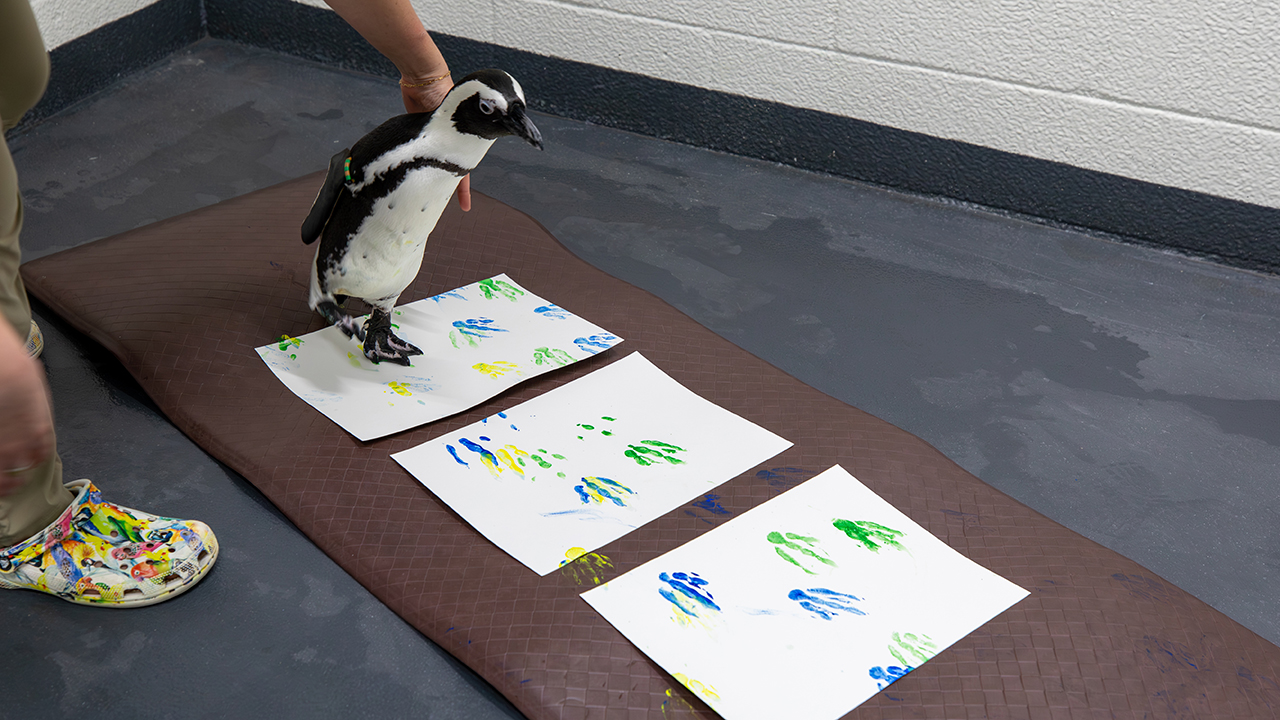
Tracking success
So, how does the team decide what’s working and what’s not?
“We have a ton of documentation,” Mia said. It’s part of the S.P.I.D.E.R. model that the team uses to implement their enrichment program—setting goals, planning, documenting, evaluating, and readjusting as needed.
The penguin team meticulously tracks each bird’s responses to enrichment activities—duration of interactions, behavioral changes, and individual preferences—and uses this data to refine and improve the program, as well as share their findings with other institutions. It’s an innovative approach that shows how modern animal care combines scientific rigor with individualized attention, creating environments where each penguin can thrive according to their needs.
“It’s important that we think about helping our animals live their most fulfilled lives,” Mia said.

